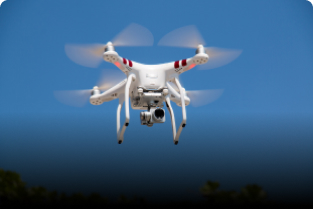The selection of a drone engine is a critical aspect of drone design and functionality. A well-chosen engine ensures optimal performance, efficiency, and longevity of the drone, while a mismatched engine can lead to performance issues, reduced flight time, or even mechanical failure. Here’s a comprehensive guide on how to choose the right engine for a drone.
1. Understand the Drone’s Purpose
The first step in choosing a drone engine is to identify the primary purpose of the drone. Different applications require different engine specifications:
- Racing Drones: High-speed and agility demand powerful and lightweight engines.
- Photography and Videography Drones: Stability and long flight times are crucial, so efficiency is key.
- Delivery Drones: These require engines with high payload capacities and endurance.
- Industrial Drones: Applications like mapping or surveying need engines that balance power and durability.
2. Determine the Drone’s Size and Weight
The engine must be capable of lifting the drone’s total weight, including:
- Frame weight.
- Payload (e.g., cameras, sensors, or cargo).
- Battery weight.
The thrust-to-weight ratio is a critical factor here. A common rule of thumb is to have a thrust that is at least twice the weight of the drone to ensure stability and maneuverability.
3. Choose Between Electric and Internal Combustion Engines
- Electric Motors: Most common in consumer and professional drones. They are lightweight, efficient, and require less maintenance.
- Best for: Small to medium-sized drones with shorter to moderate flight times.
- Types: Brushless motors (preferred for their efficiency and longevity) and brushed motors (used in low-cost drones).
- Internal Combustion Engines: Used for large drones that require extended flight times or carry heavy payloads.
- Best for: Industrial or military applications.
- Types: Gasoline or diesel engines.
4. Consider Power Output and KV Rating
- Power Output: The engine’s power output should match the drone’s operational needs. This is usually measured in watts or horsepower.
- KV Rating (RPM/Volt): Indicates how fast the motor spins per volt of electricity. Lower KV motors are suitable for heavier drones, while higher KV motors are ideal for lightweight, high-speed drones.
5. Battery Compatibility
For electric motors, ensure the engine is compatible with the battery’s voltage and capacity. A mismatch can lead to inefficiency or even damage the motor or battery. Consider the following:
- Voltage (V): Higher voltage motors are more powerful but require compatible electronic speed controllers (ESCs).
- Capacity (mAh): Larger capacity batteries provide longer flight times but add weight.
6. Propeller Compatibility
The engine and propeller work in tandem, so the motor must provide enough torque to spin the chosen propellers efficiently. Larger propellers typically require motors with higher torque and lower KV ratings.
7. Environmental Considerations
- Temperature: Motors must be capable of operating efficiently in the expected temperature range.
- Altitude: High-altitude drones may require engines that perform well in low air density conditions.
- Weather Resistance: Motors for outdoor use should be resistant to dust, moisture, and other environmental factors.
8. Budget and Quality
While it’s tempting to opt for cheaper options, investing in a high-quality engine can save costs in the long run by reducing maintenance and replacements. Research trusted brands and read reviews to ensure reliability.
9. Testing and Optimization
Before finalizing the engine, conduct test flights to ensure it meets the drone’s requirements. Monitor parameters like:
- Flight time.
- Stability and responsiveness.
- Heat generation and efficiency.
Conclusion
Choosing the right drone engine involves balancing multiple factors, including the drone’s purpose, size, weight, and environmental conditions. By carefully evaluating these aspects and conducting thorough testing, you can ensure your drone achieves optimal performance and reliability. Whether you’re building a drone for personal use or industrial applications, the engine selection process is a cornerstone of successful drone design.

